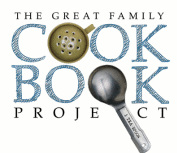Directions: |
Directions:In a large nonreactive pot, add the next ingredients to the gallon of water. Boil all together for 30 minutes, then strain into a crock that will hold it with a little room to spare. Set aside to cool.
When cooled, add the yeast, dissolved in some of the liquid. Allow to ferment in a cool place - 55 degrees is ideal - until it ceases bubbling and the liquor clears*, then bottle, cap tightly an store in a cool, dark cellar. It should not be used for at least a month, and longer is better.
Mead, unlike many other drinks, does not improve with really long aging, so it should be consumed within a year of the time it was made.
*When the wine clears, I siphon it into bottles or jars, using a length of aquarium hose, making sure not to get any of the dregs that are in the bottom of the jar. Dregs are what makes wine cloudy. |
Personal
Notes: |
Personal
Notes: When I make my wine, I don't have a crock, so I use a large sangria bottle. For the fermentation stage, I put a large (12" diameter) balloon on top and secure it with a heavy duty rubber band. It will expand to full size. It takes six weeks.
Auntie Enn
A long, long time ago, before the invention of writing and polyester, a lucky human stumbled upon the contents of a beehive. The beehive had been left out in the rain, and the honey inside had fermented.
Behold: Mead!
Mead soon became known as "the nectar of the gods". King Tut was a satisfied customer and so were Eric the Red and Queen Elizabeth the First.
Mead (also known as honey wine) has been around for millennia. And mead makers have spent most of that time honing their craft (They got a thousand-year head start on the grape wine folks).
Sharon Lott Tyson
The history of mead may go back more than 8,000 years. The oldest known meads were created on the Island of Crete. Wine had not yet been created. Mead was the drink of the Age of Gold, and the word for drunk in classical Greek remained "honey-intoxicated".
Jerry Jolly
|

 This recipe for Mead (Honey Wine) is from
This recipe for Mead (Honey Wine) is from